Smokey Cajun-spiced seared shrimp in smoked paprika, onion, garlic powder, and other spices are served with a vegetable medley of fresh corn, red bell pepper, and red onions. Creamy avocado chunks and jasmine rice are then drizzled with lemon Dijon mustard remoulade, making this the perfect Cajun shrimp rice bowl.
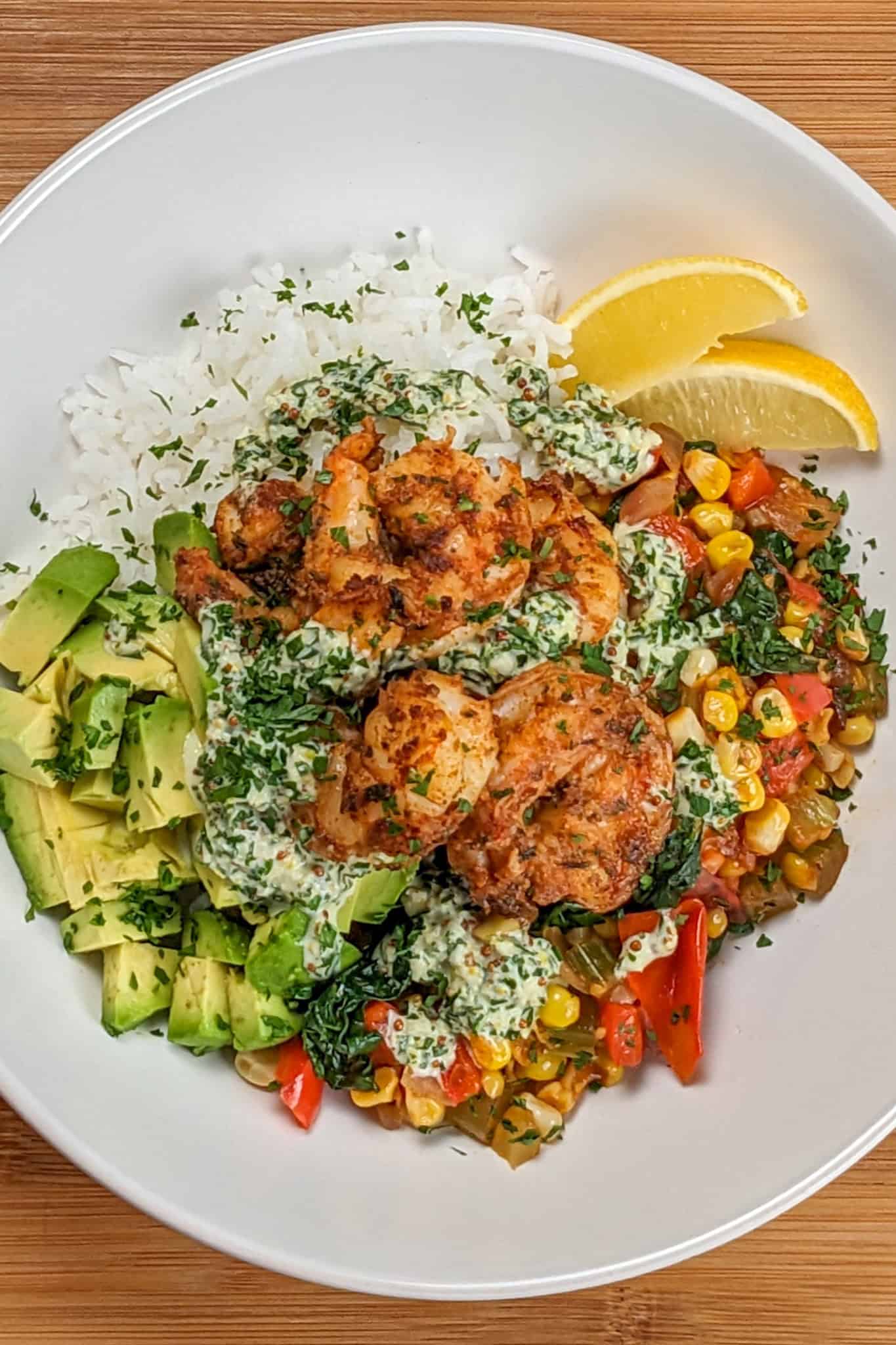
Table of Contents
Jump to:
- Fresh Contemporary Cajun Twist
- About Cajun Spice
- Cajun Blackened Foods
- Cajun, Creole, and the Holy Trinity
- The Holy Trinity vs Mirepoix
- Creole vs Cajun Cuisine
- Ingredients with Steps
- Shrimp Sizes
- Instructions with Pictures
- Substitutions
- Variations
- Equipment
- Storage
- Cooking Tip
- Frequently Asked Questions
- Rice Bowl Recipes
- Shrimp Recipes
- 📖 Recipe
- Subscribe to my YouTube Channel.
- Have a Comment or Question?
Fresh Contemporary Cajun Twist
Enjoy the vibrant flavors of this Spicy Cajun Shrimp Rice Bowl with Lemon Remoulade. This dish features smokey Cajun-spiced shrimp, seared to perfection with a blend of smoked paprika, onion, garlic powder, and other robust spices.
Nestled on a bed of fluffy jasmine rice, the shrimp are accompanied by a colorful vegetable medley of fresh corn, red bell pepper, and red onions, adding a delightful crunch and sweetness.
Creamy avocado chunks provide a luscious contrast, while a drizzle of zesty lemon Dijon mustard remoulade ties everything together, elevating each bite to new heights. Perfect for those who crave bold, dynamic flavors, this rice bowl celebrates Southern cuisine with a fresh, contemporary twist.
About Cajun Spice
Cajun spice, originating from the culinary traditions of the French-speaking Acadians who settled in Louisiana in the 18th century, has become a hallmark of American cuisine. The Acadians, later known as Cajuns, combined French culinary techniques with local ingredients such as peppers, garlic, and herbs, creating a distinctive and flavorful spice blend.
Over time, the rich, smokey, and often fiery profile of Cajun seasoning—comprising smoked paprika, garlic powder, onion powder, cayenne pepper, and other spices—gained popularity beyond the bayous and swamps of Louisiana.
The 1980s marked a significant surge in the nationwide popularity of Cajun cuisine, thanks in part to chefs like Paul Prudhomme, whose blackened redfish and other Cajun dishes captivated the American palate. Today, in North American kitchens, you might find Cajun spice, which has become a staple seasoning blend in most kitchens nationwide.
Cajun Blackened Foods
Traditional Cajun blackened foods are a hallmark of Cajun cuisine, known for their intense flavor and distinctive cooking technique. The blackening process involves coating fish, shrimp, chicken, or pork in a rich blend of Cajun spices and searing it in a hot cast-iron skillet until a dark, flavorful crust forms.
Again, this method, popularized by Chef Prudhomme, locks in the spices and juices, creating a smoky, spicy exterior while keeping the inside tender and juicy. The hallmark of blackened foods is their complex flavor profile, resulting from the high-heat cooking that caramelizes the spices and enhances the natural flavors of the meat or seafood.
Technically, this recipe does not use the blackening method but uses the spice blend to capture that bold flavor.

Looking for authentic Cajun recipes? Check out Louisiana Woman Blog and Acadiana Table.
Cajun, Creole, and the Holy Trinity
In Louisiana cuisine, the "holy trinity" refers to the essential trio of vegetables: onions, bell peppers, and celery. This combination forms the base of many Cajun and Creole dishes, similar to the French mirepoix but reflecting the regional flavors of Louisiana.
The holy trinity is used in classic dishes such as gumbo, jambalaya, étouffée, and red beans and rice. By sautéing these vegetables together, often in a roux or alongside garlic and spices, cooks create a rich, savory flavor profile that is quintessentially Louisianan.
This culinary tradition showcases the region's ability to transform simple, local ingredients into the vibrant essence of Louisiana cuisine. You will find this influence in the vegetable medley by using red onion, red bell pepper, and celery. This is then combined with sweet corn to complement the sweetness found in fresh shrimp.

Are you looking for authentic Creole recipes? Check out Creole Cajun Chef and The Gumbo Pages.
The Holy Trinity vs Mirepoix
So if you are used to Mirepoix, you might ask, what is the difference between them? The holy trinity and mirepoix are both fundamental vegetable mixtures in their respective cuisines, but they differ in composition and flavor profiles.
Mirepoix, a staple in French cooking, consists of onions, carrots, and celery, typically sautéed in butter or oil to create a subtle, aromatic base for soups, stews, sauces, and braises. The sweetness of the carrots in mirepoix adds a delicate balance to the overall flavor.
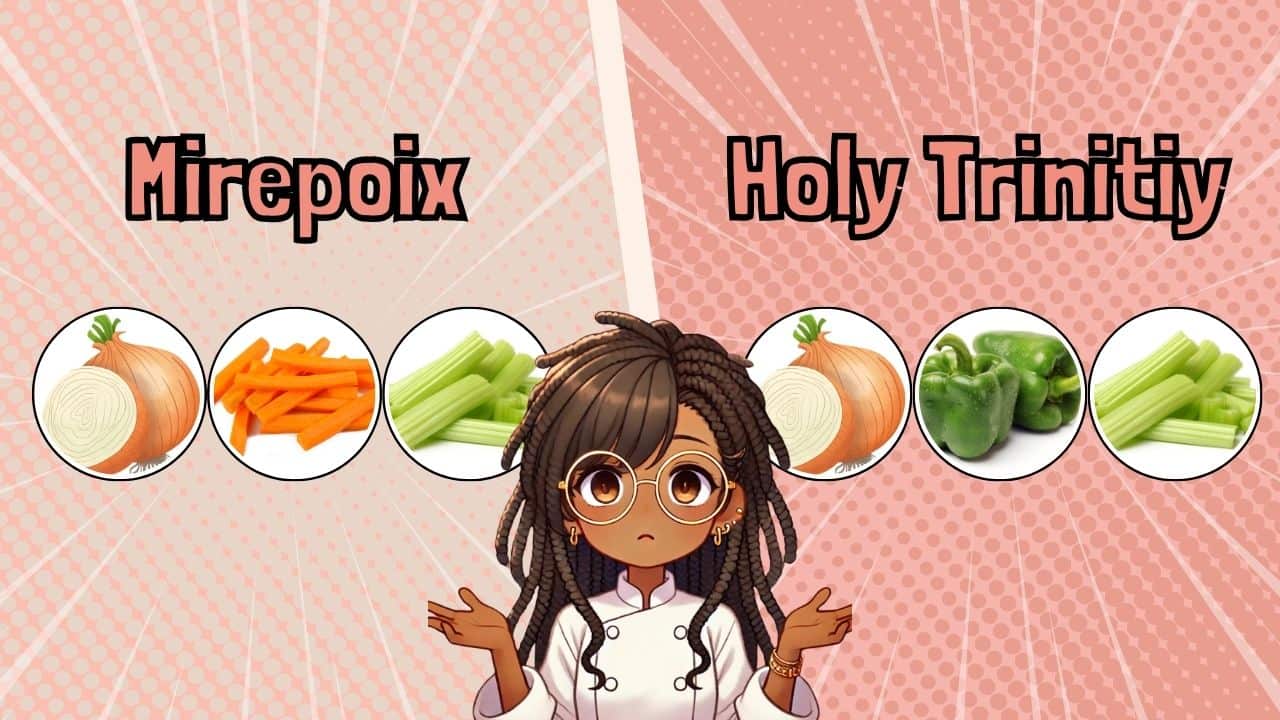
In contrast, the holy trinity of Louisiana cuisine comprises onions, bell peppers, and celery, reflecting the region's unique culinary heritage. The substitution of bell peppers for carrots introduces a more robust and slightly spicy note, which is integral to the bold and hearty dishes of Cajun and Creole cooking, such as gumbo, jambalaya, and étouffée.
While both mixtures serve to enhance the depth and complexity of dishes, the holy trinity offers a distinctive flavor that is quintessentially Louisianan, setting it apart from its French counterpart.
Creole vs Cajun Cuisine
Both Creole and Cajun cuisines originated in Louisiana but reflect distinct cultural heritages and culinary influences. Creole cuisine, often associated with New Orleans, is a blend of French, Spanish, African, and Caribbean influences, resulting in a more cosmopolitan and diverse array of dishes.
It frequently uses tomatoes, a variety of spices, and a broader range of ingredients due to the access to trade goods in the city. Cajun cuisine, on the other hand, originates from the rural French-speaking Acadian settlers and is characterized by its rustic, hearty nature, relying on locally available ingredients and a simpler, spicier flavor profile.
Key differences include the use of a roux in both but with differing color and intensity and the holy trinity of onions, bell peppers, and celery, which is fundamental to both but prepared in distinct styles. While Creole cuisine often has a refined, city-style presentation, Cajun food embodies the spirit of the country with its robust, down-to-earth flavors.
More Tasty Shrimp Recipes
- Best Spicy Sauteed Chili Lemon Garlic Shrimp and Vegetables
- Spicy Creole Shrimp and White Cheddar Cheese Risotto
- Shishito Eggplant Shrimp Stir-Fry
- Jalapeño Pesto and Argentinian Shrimp Pasta
- Spicy Shrimp Farro Risotto with Mushrooms and Peas
Ingredients with Steps
To begin, start by cooking the jasmine rice. In addition, don't forget to flake it before serving it for fluffy rice. For the vegetables, separately dice the red onion, red bell pepper, and celery, cut corn kernels off the cob, and cut the Campari tomatoes into eighths.
Cook the vegetables in a large skillet over medium-high heat by adding them incrementally to maintain the pan's temperature, seasoning with kosher salt and ground black pepper, and cooking until golden brown.
Meanwhile, make a sauce by blending flat-leaf parsley, garlic cloves, mayonnaise, whole-grain Dijon mustard, fresh lemon juice, and lemon zest with salt and black pepper. For the shrimp, peel, devein, and dry them, then season with smoked paprika, onion and garlic powder, cayenne pepper, dried oregano, thyme and basil, kosher salt, and black pepper.
Cook the shrimp in a hot skillet until they begin to curl and cook through, then remove. Finish the vegetables by adding the tomatoes to deglaze the pan baby spinach, and combine with the reserved vegetables.
Serve by portioning the rice, vegetables, and avocado chunks, topped with the shrimp and lemon remoulade, optionally garnished with parsley.
Culinary Glossary
This section provides concise definitions of key ingredients and techniques to enhance understanding and improve cooking skills related to this recipe. Check out the live Culinary Glossary here.
- Jasmine Rice - This is a fragrant, long-grain rice known for its slightly sticky texture and floral aroma, commonly used in Southeast Asian and Caribbean cuisine.
- Campari Tomatoes - These tomatoes are naturally sweet due to the balance of their acidity, making them enjoyable in quick-cooking dishes. That's why I tend to use them a lot in my recipes.
- Avocado Oil - This oil was used over olive oil due to its higher smoking point; learn more about high-smoke-point oils here.
- Flat-Leaf Parsley - Flat-leaf parsley, also known as Italian parsley, has a stronger, more robust flavor and smoother texture compared to curly parsley, which has a milder taste and a more decorative, ruffled appearance. Use what you prefer.
- Whole-Grain Dijon Mustard - It has a tangy, sharp flavor and a coarse, slightly crunchy texture. It combines the pungency of traditional Dijon with the added depth of whole mustard seeds, giving this dish an extra palette of textures.
- 16 - 20 Shrimp - "16 - 20" refers to the size classification indicating there are between 16 and 20 shrimp per pound, where the smaller numbers indicate larger shrimp. For example, U-10 are larger while 21-25 are smaller. Also, if using frozen shrimp, ensure they are fully thawed before use.
Shrimp Sizes
- Jumbo/Colossal Shrimp: 16-20
- Jumbo Shrimp: 21-30
- Large Shrimp: 31-35
- Medium Shrimp: 51-60
See the Cajun Shrimp Rice Bowl recipe card for quantities below.
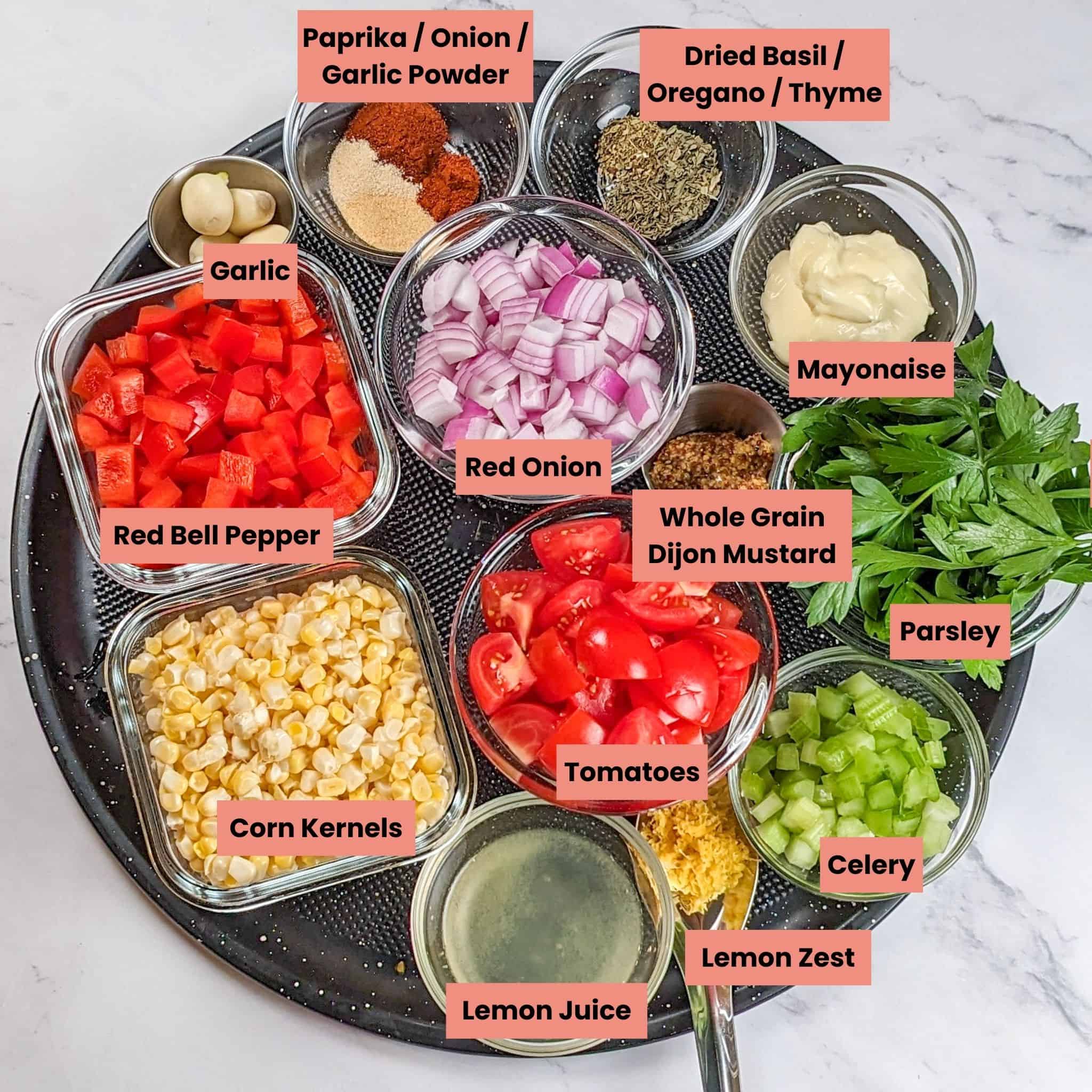
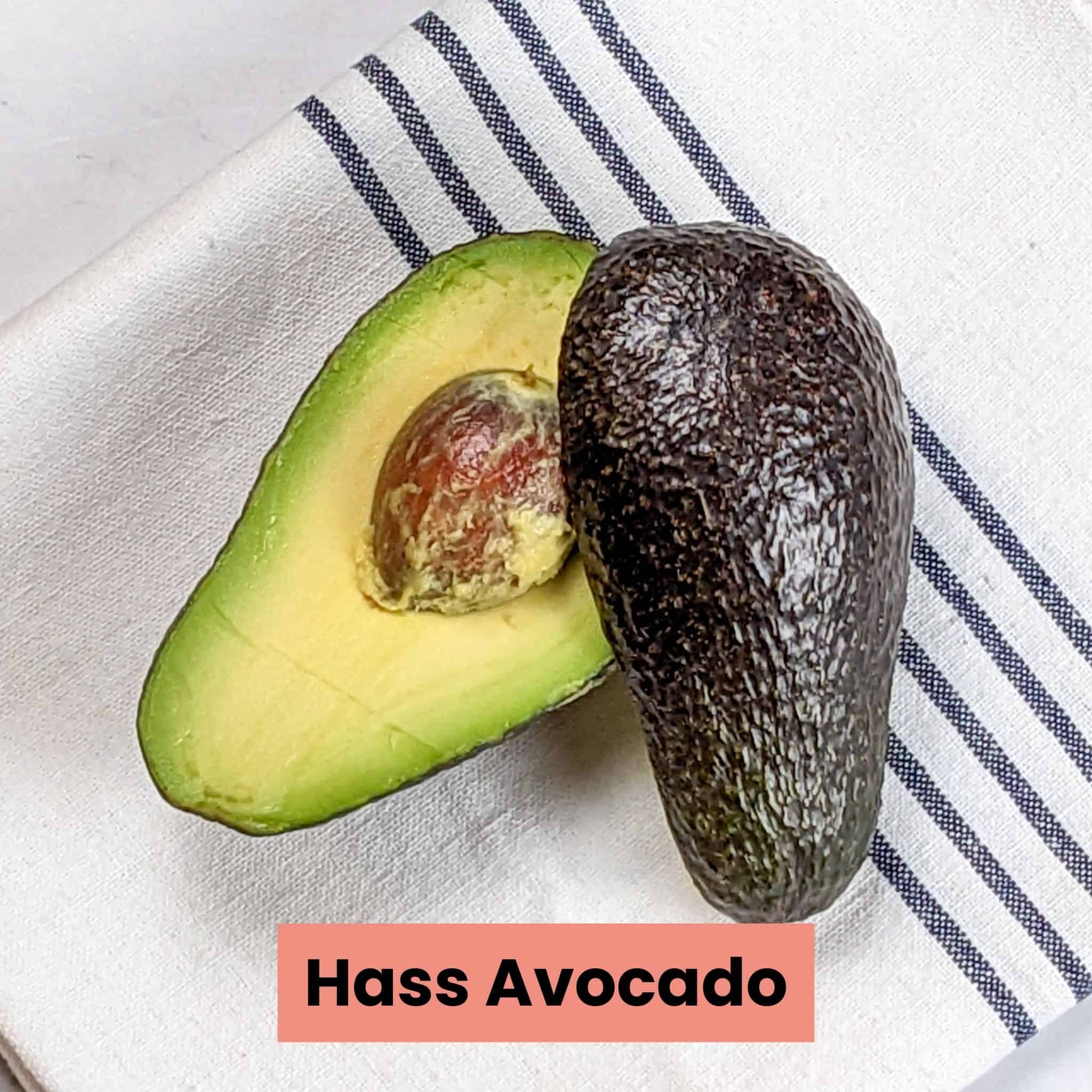
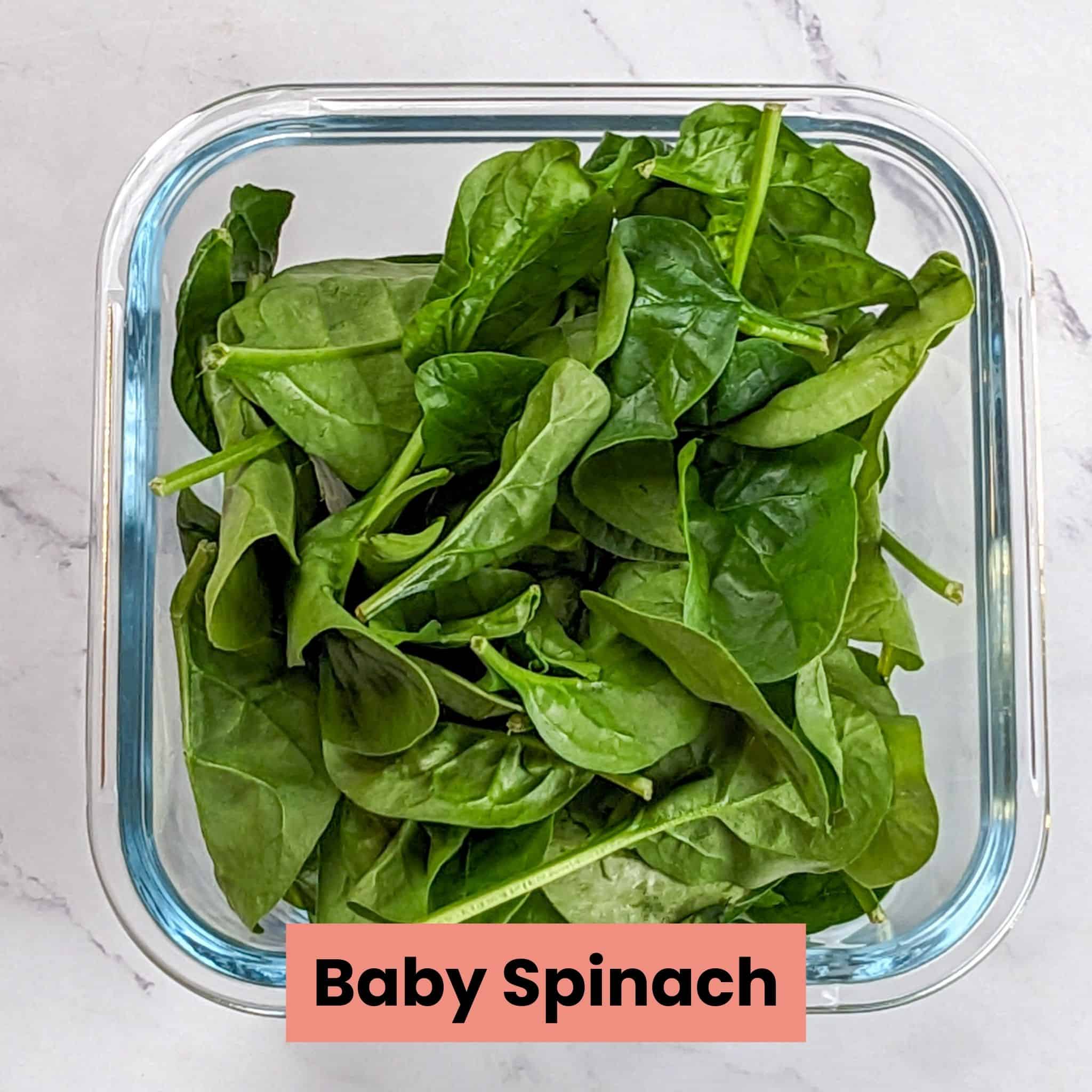
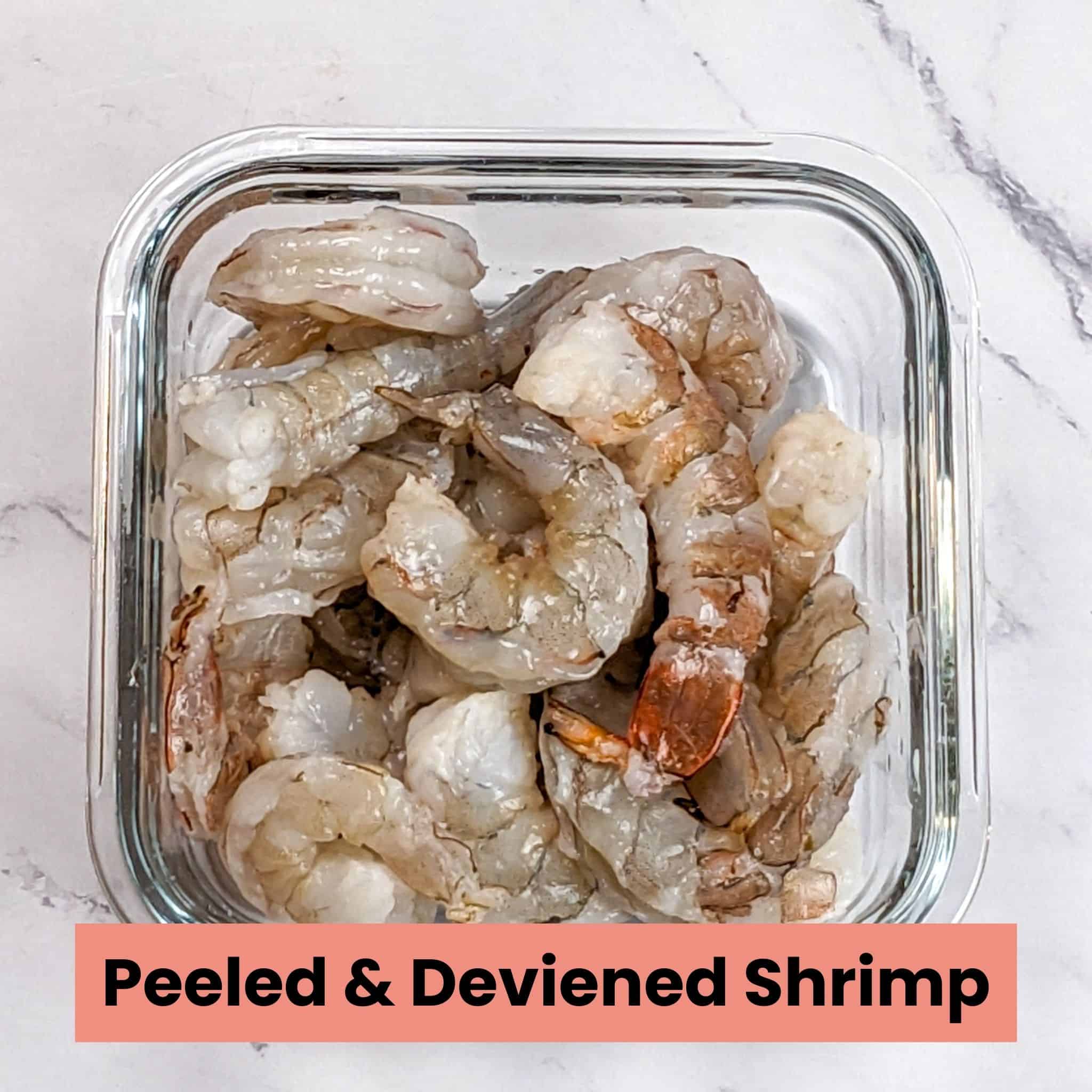
Instructions with Pictures
Follow the instructions and cooking tips below using the step-by-step picture guide.
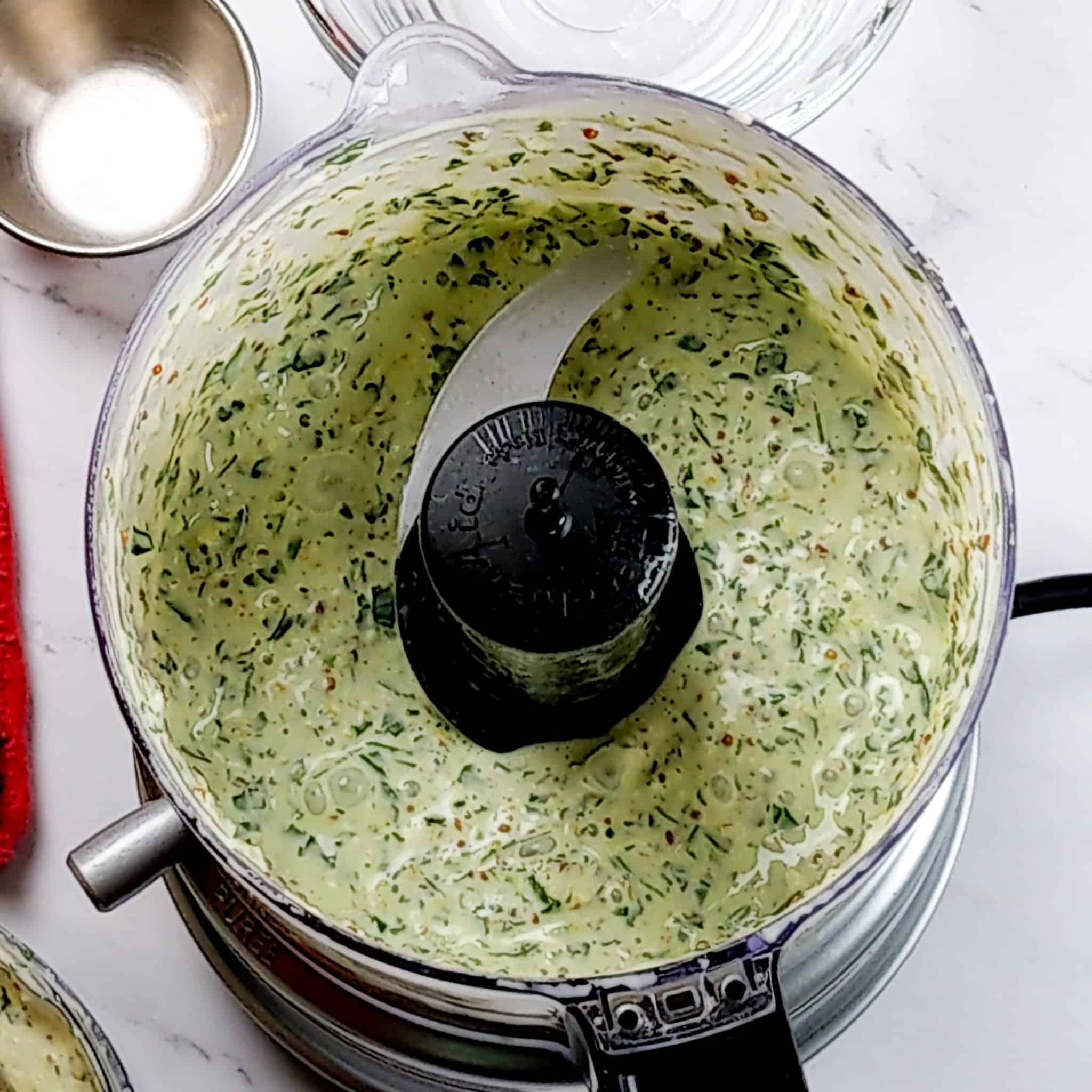
The food processor conveniently blended the ingredients to decrease the prep time.
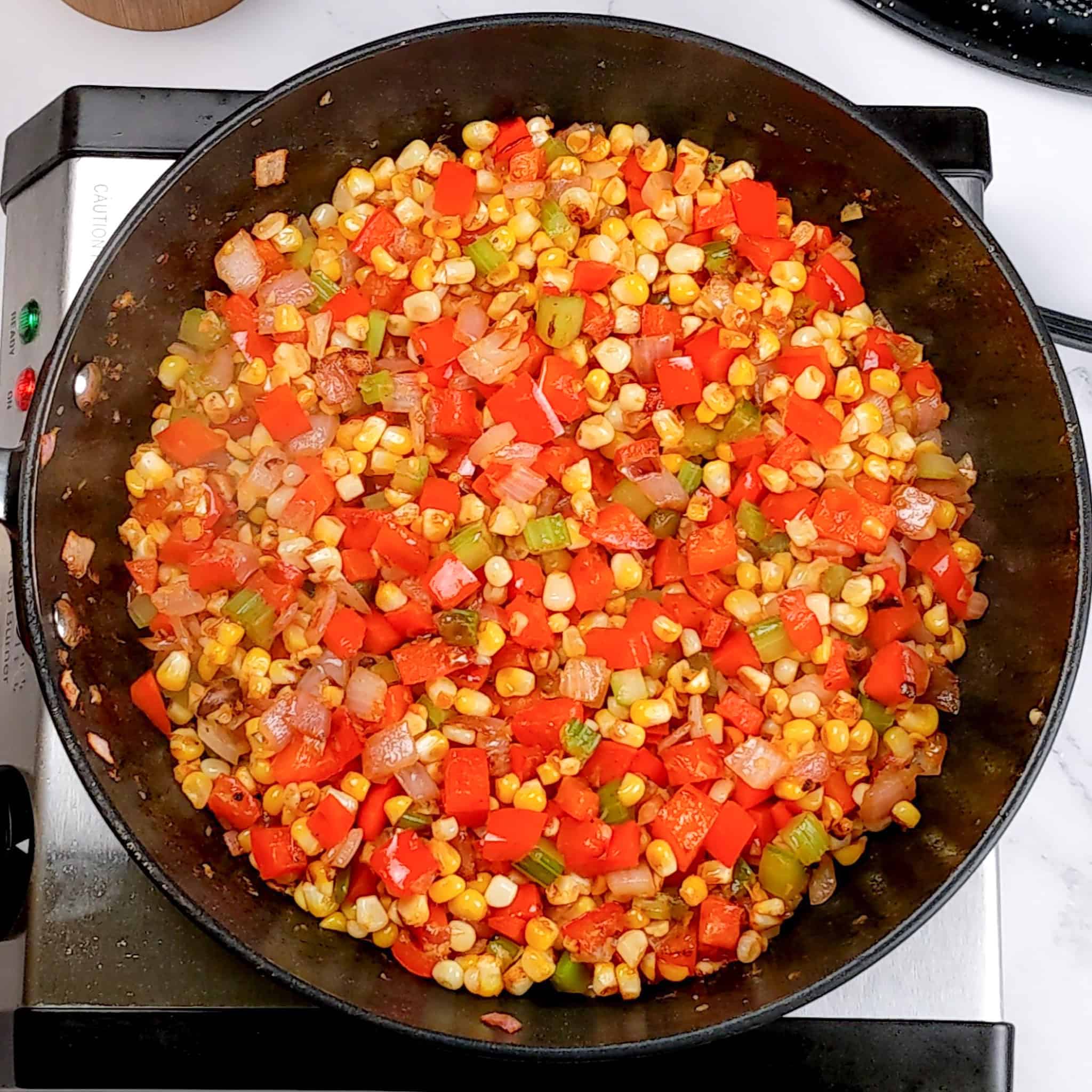
This recipe has a large portion of vegetables; follow the recipe's instructions for sauteeing to prevent soggy vegetables.
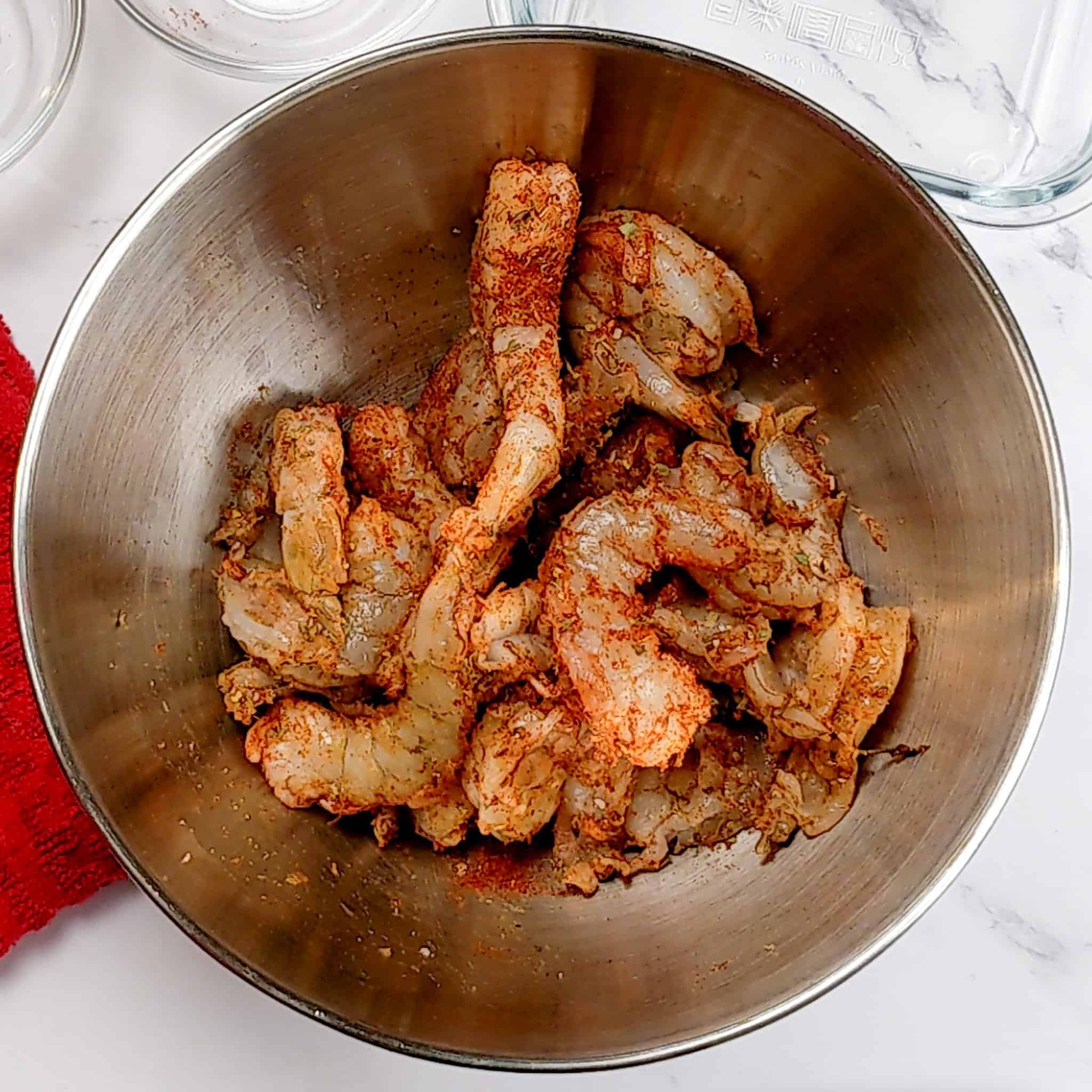
The shrimp are patted dry first to ensure the spice blend adheres to the shrimp for an even coat.
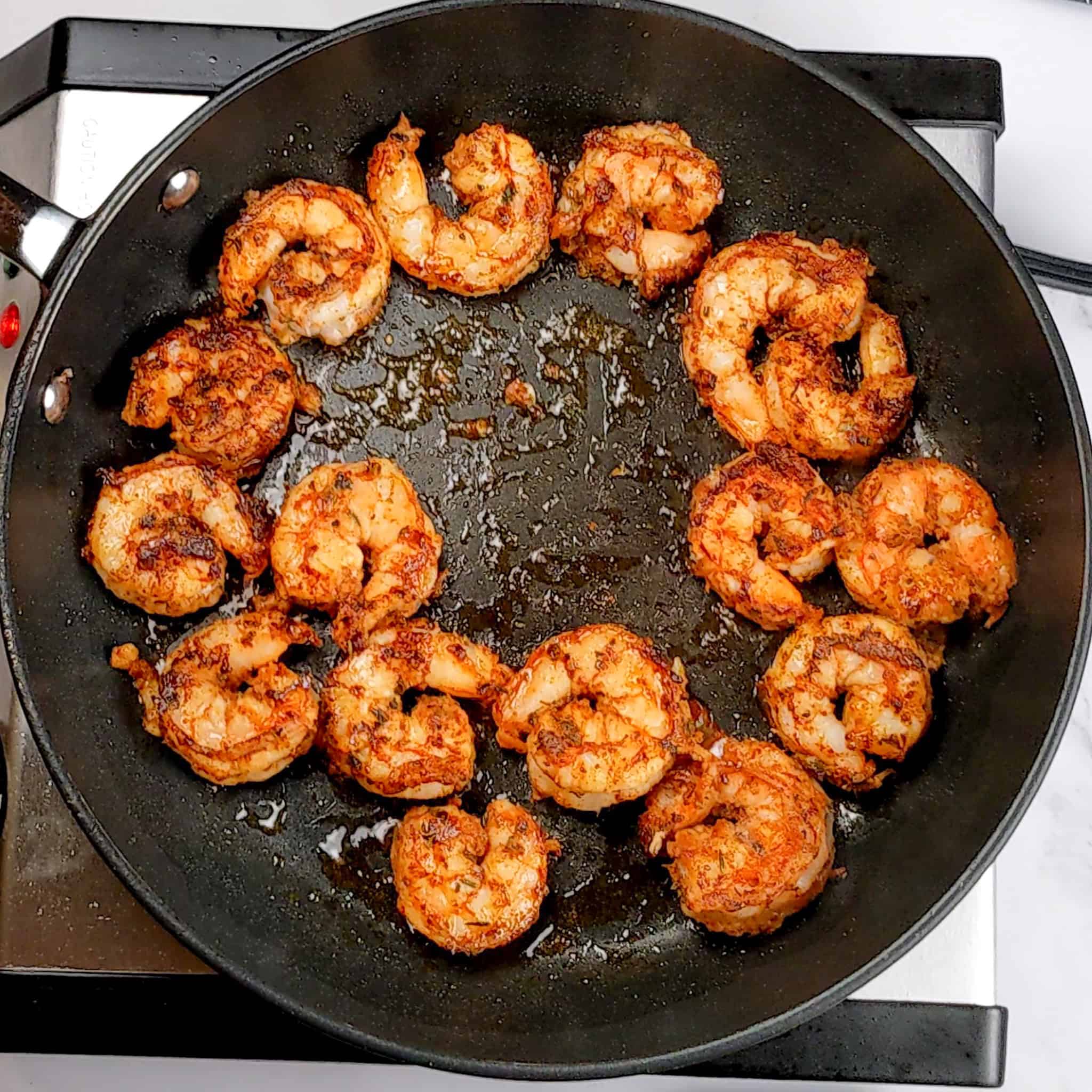
Pay close attention to the shrimp to prevent overcooking. When you see them beginning to curl, immediately flip them.

The tomatoes soaked up the shrimp's leftover fond before being mixed with spinach and the rest of the vegetables.
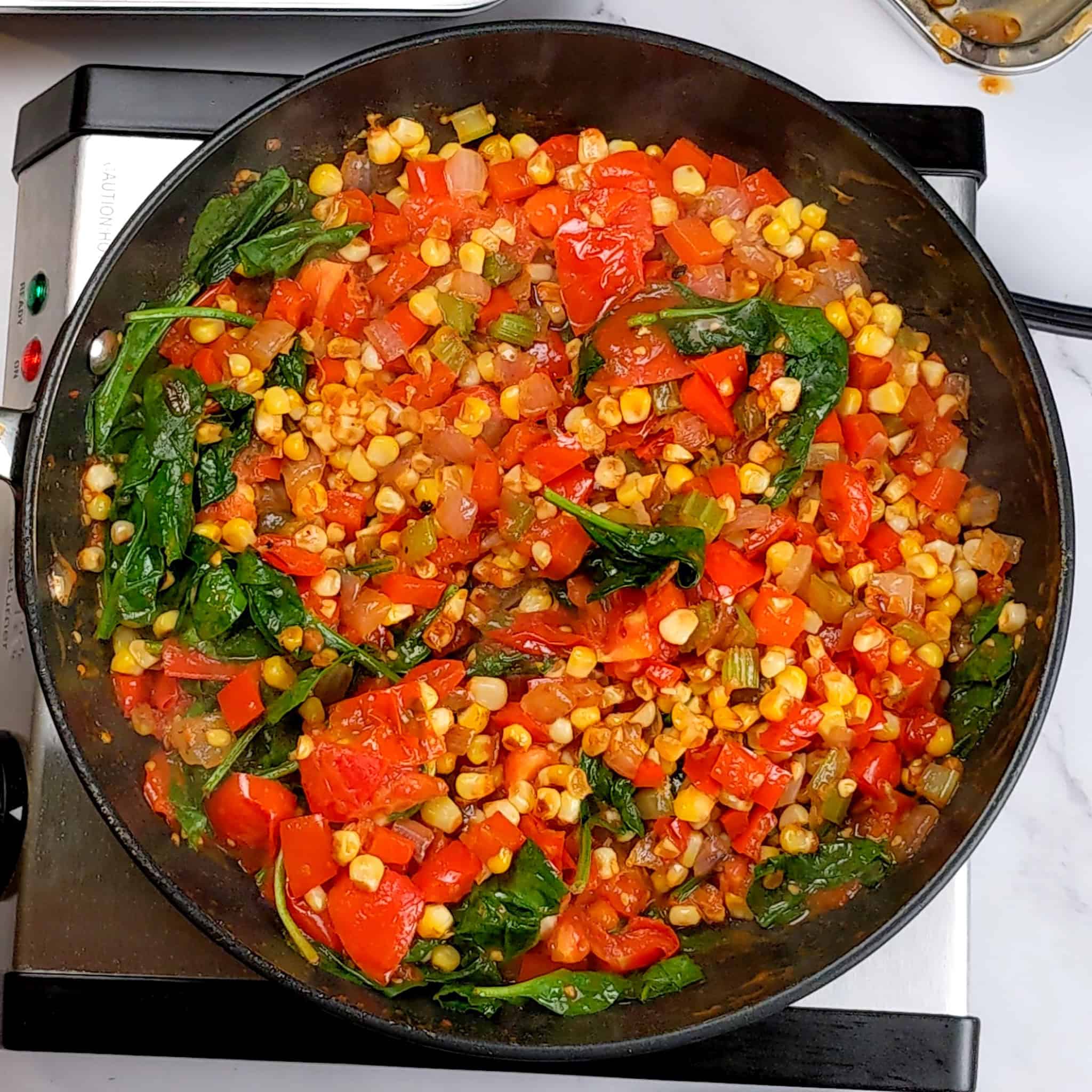
Then, the vegetables are added back to complete the seasoning of the vegetable medley.
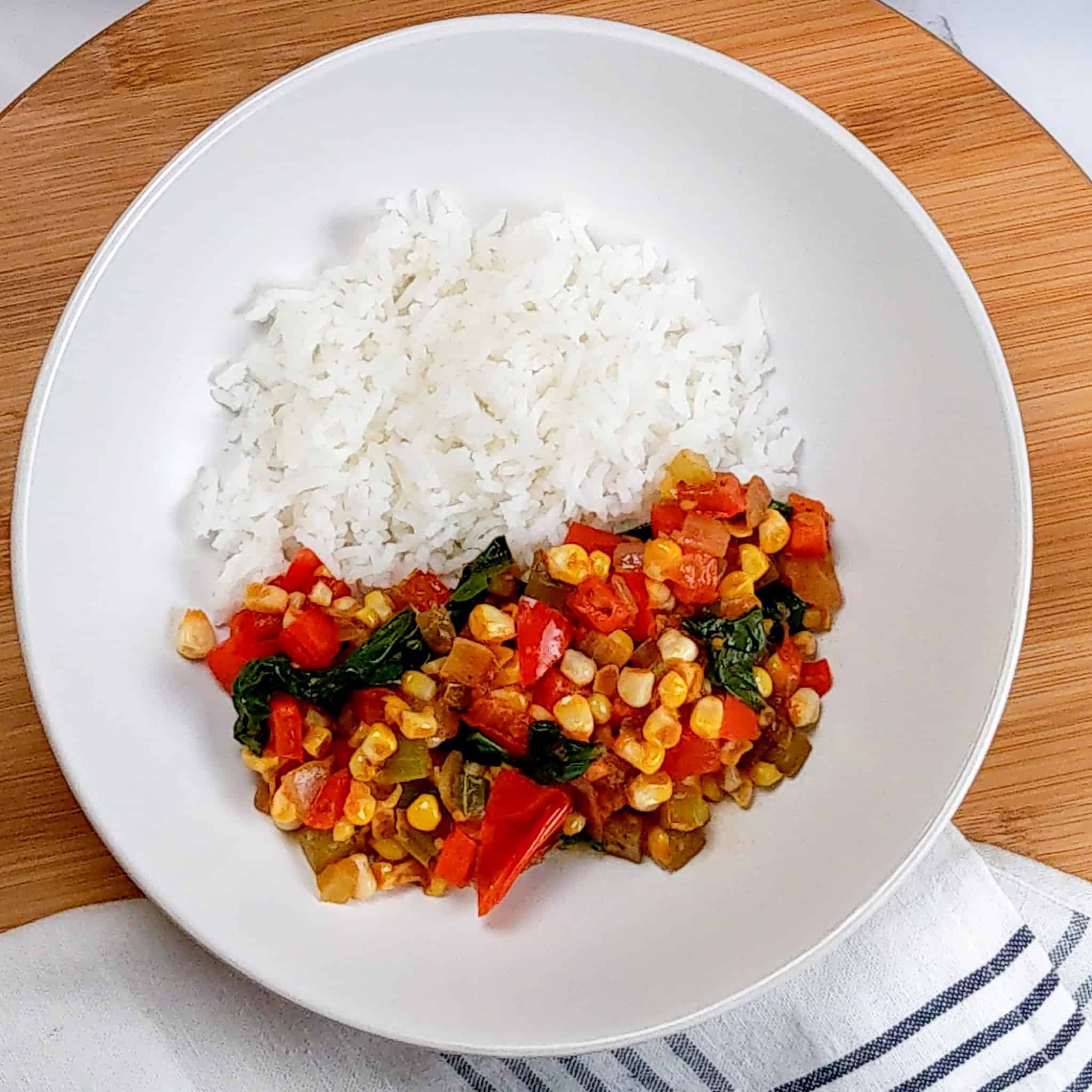
This dish has equal parts rice and vegetables.
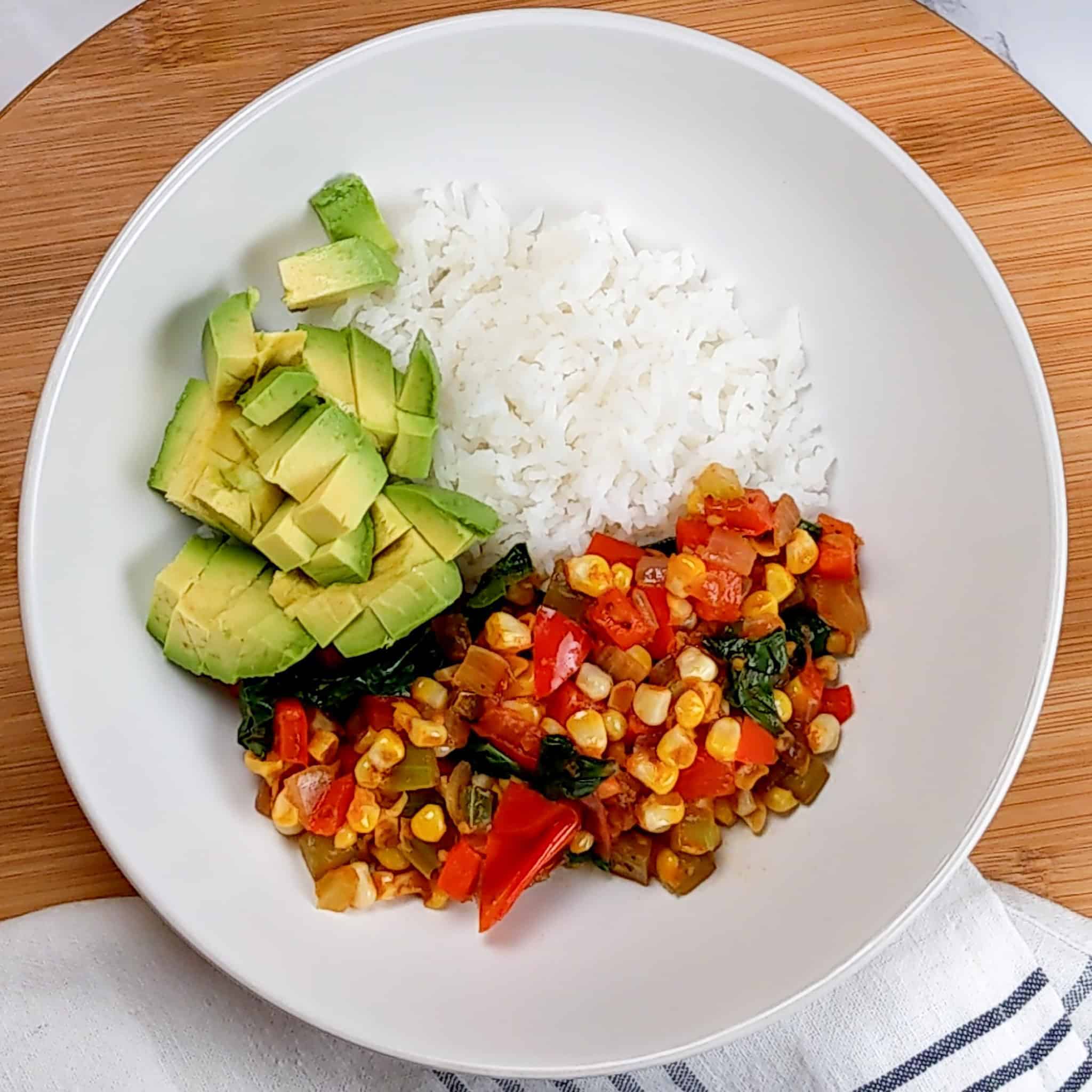
Then, you'll add the avocado chunks.
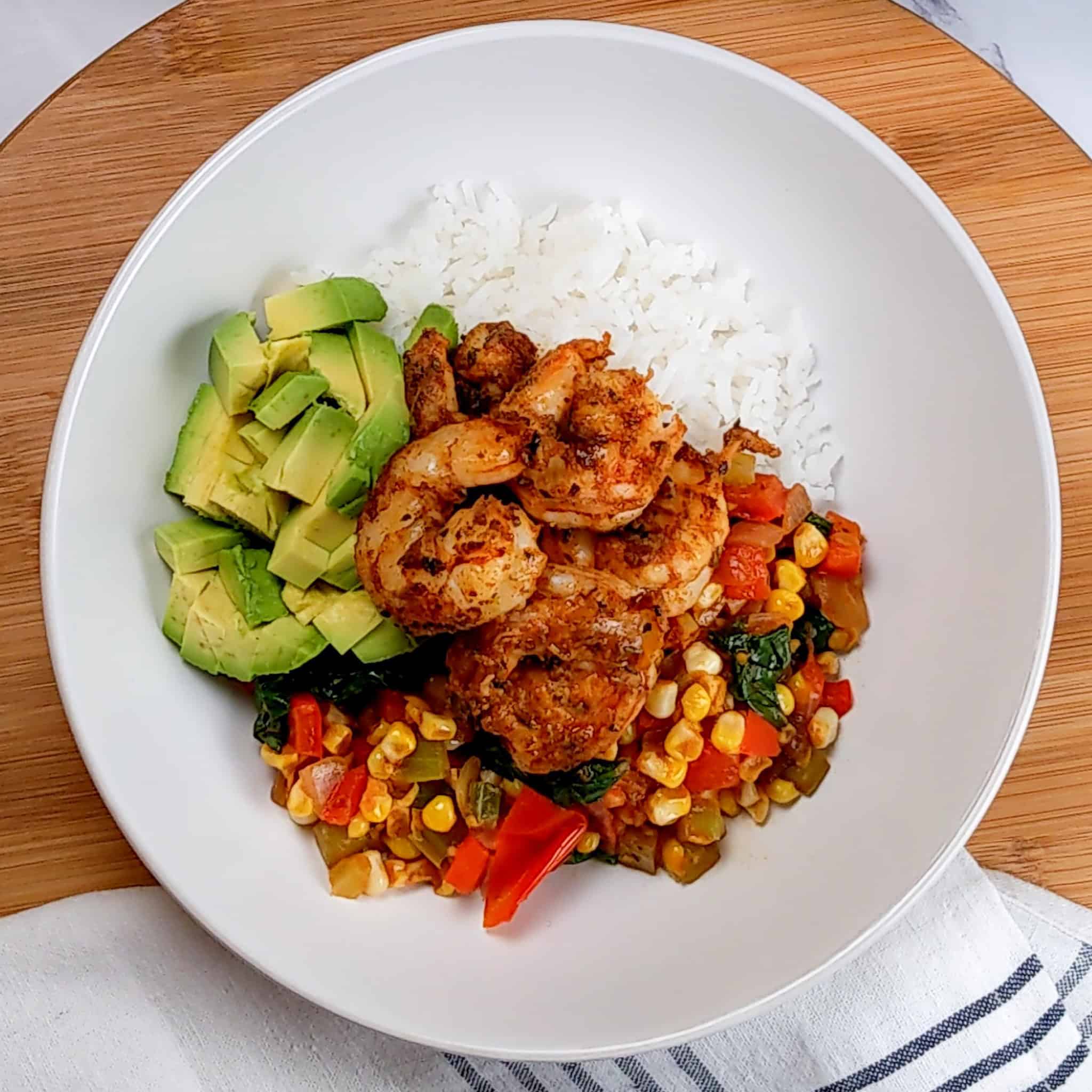
Next, top with the spicy, juicy shrimp.
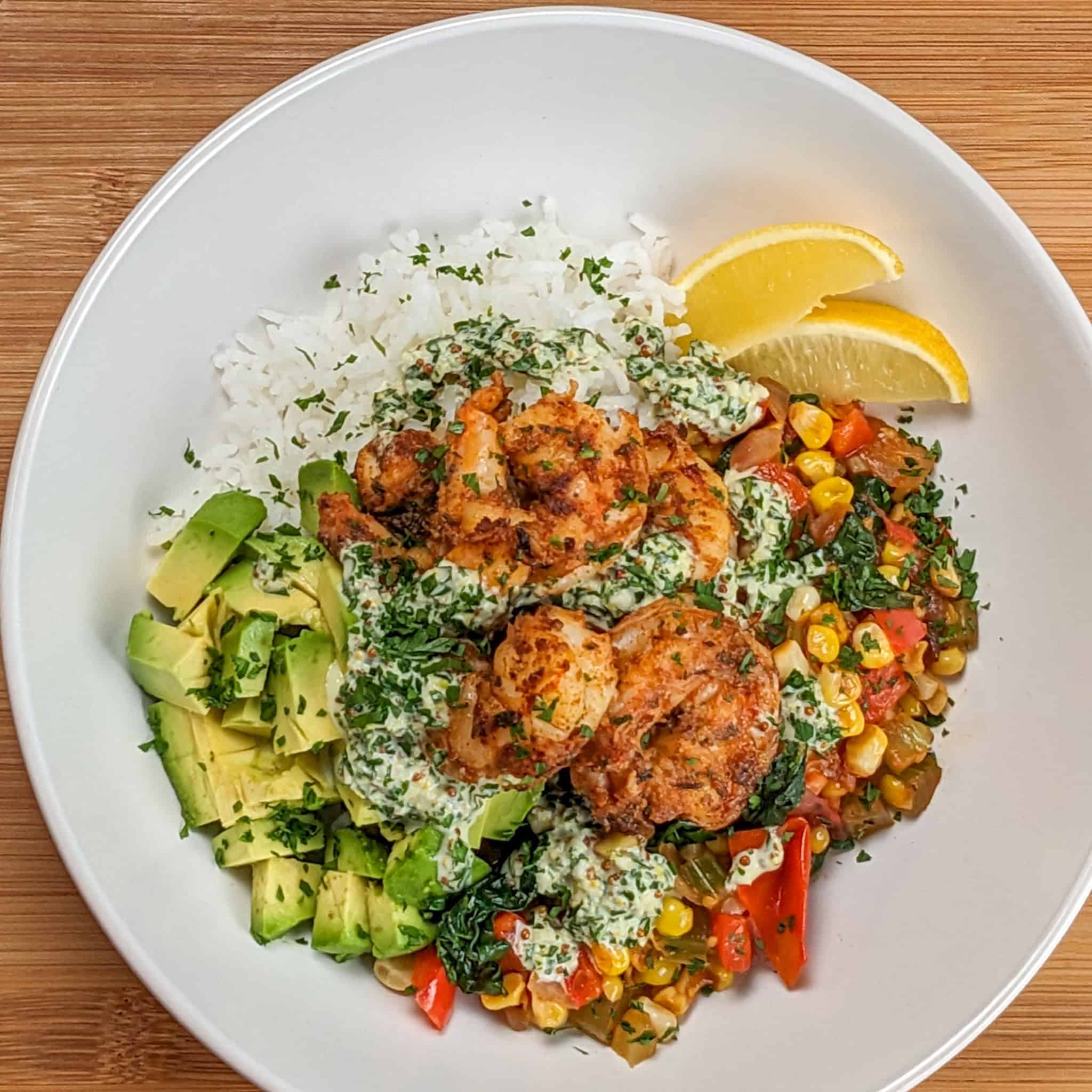
Finish the shrimp bowl with the remoulade and garnish wtih chopped parsley and lemon wedges for an eye-pleasing presentation.
Busy Folks - Become a better home cook with tips to help you cook more efficiently on the Cook's Notebook tab. In addition, some related detailed steps can be found there.
Substitutions
Dairy-Free
- Yay! This Cajun Shrimp Rice Bowl recipe is already dairy-free.
Gluten-Free
- Bonus! This Cajun Shrimp Rice Bowl recipe is already gluten-free.
Vegetarian
- 16/20 Raw Shrimp - The main ingredient is shrimp for this; however, for texture, you can substitute it with a combination of extra firm tofu bites and button mushrooms. I suggest cutting the mushrooms in half before seasoning them and to get your tofu really firm for frying, use a tofu press; learn more about it here.
Convenience
- Jasmine Rice - You can use your favorite white rice, leftover rice, or microwavable rice pouches for quick preparation. Additionally, you can use brown rice, but be aware that it takes a longer cooking time. Consider this when timing out the recipe.
- Campari Tomatoes - These are chosen for their balance between sweetness and acidity. However, you can substitute these with other tomatoes; ensure that you cut them into one-inch chunks.
- Avocado Oil - This oil was used because of its high smoke point. However, other high-smoke oils, such as canola or vegetables, can also be used.
- Whole-Grain Dijon Mustard - This mustard was used for its texture, which is provided by the mustard grains. However, you can substitute this with regular Dijon or brown mustard. Yellow mustard will be a little bit too sour.
- Homemade Cajun Seasoning - You can substitute the cajun shrimp recipe of smoked paprika, onion powder, garlic powder, cayenne powder, dried basil, oregano, thyme, salt, and pepper with a store-bought cajun spice blend.
Change Heat Level - Modify the recipe's heat level to your liking and learn more about the Scoville Scale and Chili Pairings.
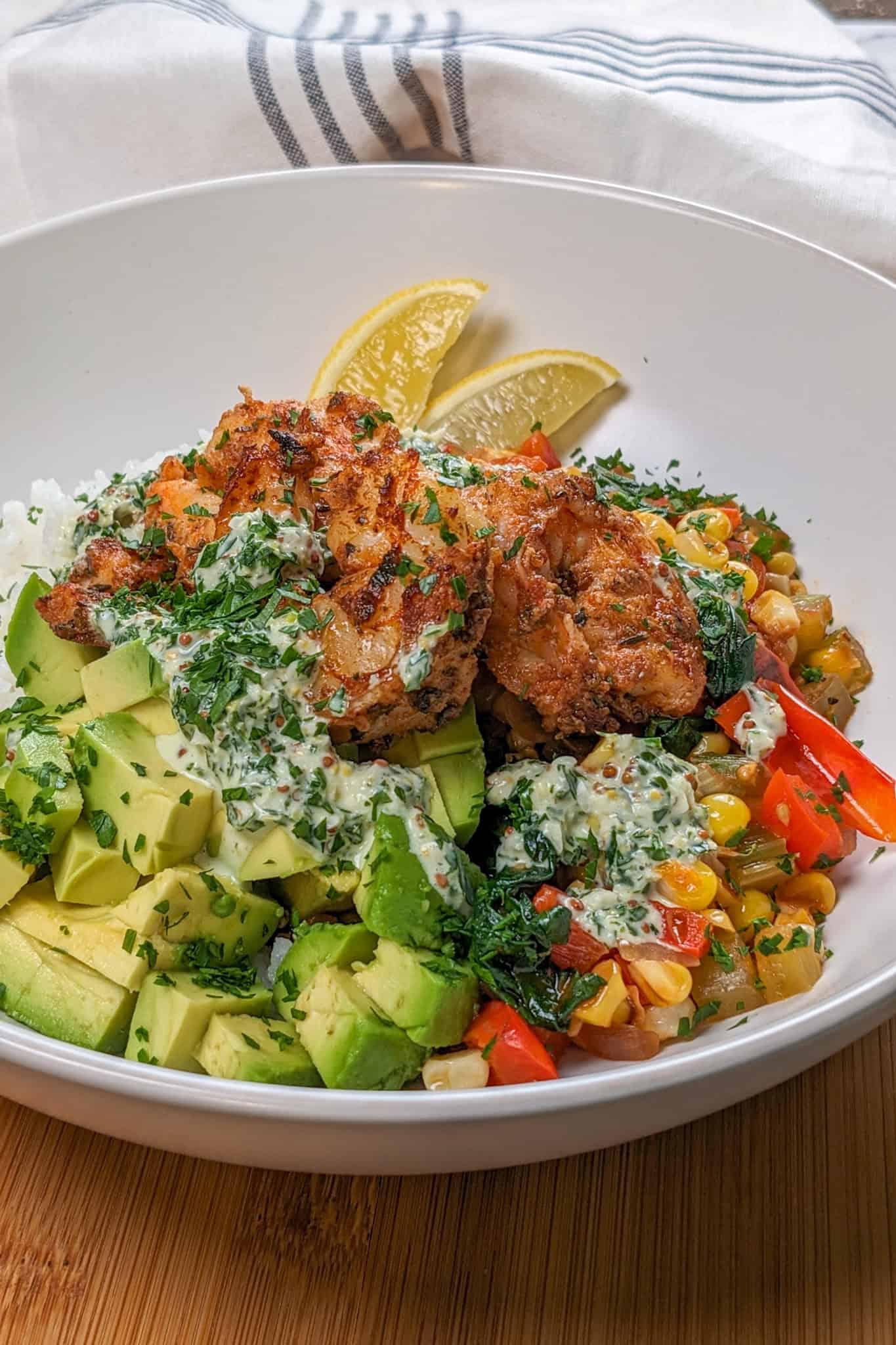
Variations
- Black Beans - Adding black beans to the corn medley is a great way to increase the protein in this rice dish. It will still complement the cajun shrimp and lemon remoulade for a tasty meal.
Equipment
- Rice Cooker - Using a rice cooker simplifies the cooking process, ensuring perfectly cooked rice with minimal effort and freeing up stove space for preparing other dishes. However, the recipe does provide instructions for the stovetop method.
- Large Skillet - You'll need a large skillet to cook a large amount of shrimp and vegetables evenly. For this recipe, I used the dependable American-made oven broiler-safe All-Clad HA1 Hard Anodized Nonstick 12-inch Fry Pan.
- Food Processor - Using a food processor to make sauces ensures a smooth, well-blended consistency quickly and efficiently, saving time and effort compared to manual mixing. If you do not have one you can finely chop the ingredients. To develop this recipe, I used the KitchenAid 3.5 Cup Food Chopper.
Kitchen Must Haves - Find other tools I use here.
Storage
- Refrigerator - To store in the fridge, place the remoulade, shrimp, vegetable medley, and rice in separate shallow 2-inch containers to cool down quickly. Then, store it in an airtight container. The meal will last up to 4 days. For the avocado, store the uncut avocado in an air-tight container, and it should last for 2 days with slight browning.
- Freezer - For the shrimp, vegetables, and rice, follow the refrigeration process mentioned above. Then, place them in the freezer in a labeled, airtight container.
Airtight Food Containers - I interchange glass food storage containers with plastic clipping lids or wooden push-ins. I always suggest glass storage containers because they can be microwaved, they hold food without staining, and the glass keeps the food at a more stable temperature, keeping it fresher and longer.
Try the OXO Good Grips Smart Seal Glass Rectangle Food Storage Containers or the Pyrex Freshlock Glass Food Storage Containers.
Cooking Tip
- Cleaning Shrimp - To peel and devein shrimp, start by holding the shrimp's body and gently twisting off the head, if still attached.
- Peel away the shell, starting from the legs, then remove the tail if desired.
- Use a paring knife or a specialized deveining tool to make a shallow cut along the back of the shrimp, exposing the dark vein.
- Carefully lift and pull out the vein with the tip of the knife or your fingers, then rinse the shrimp under cold water to remove any remaining shell fragments or vein residue. Learn other Prepping Shrimp Techniques here.
- No More Chewy Shrimp - To prevent overcooking shrimp in a frying pan, cook them over medium-high heat until they just turn opaque and pink, typically about 1-2 minutes per side, then promptly remove them from the pan.
Your Cooking Tips Resource Guide - Become a better home cook with tips to help you cook more efficiently on the Cook's Notebook tab. Click here for an extended live Culinary Glossary.
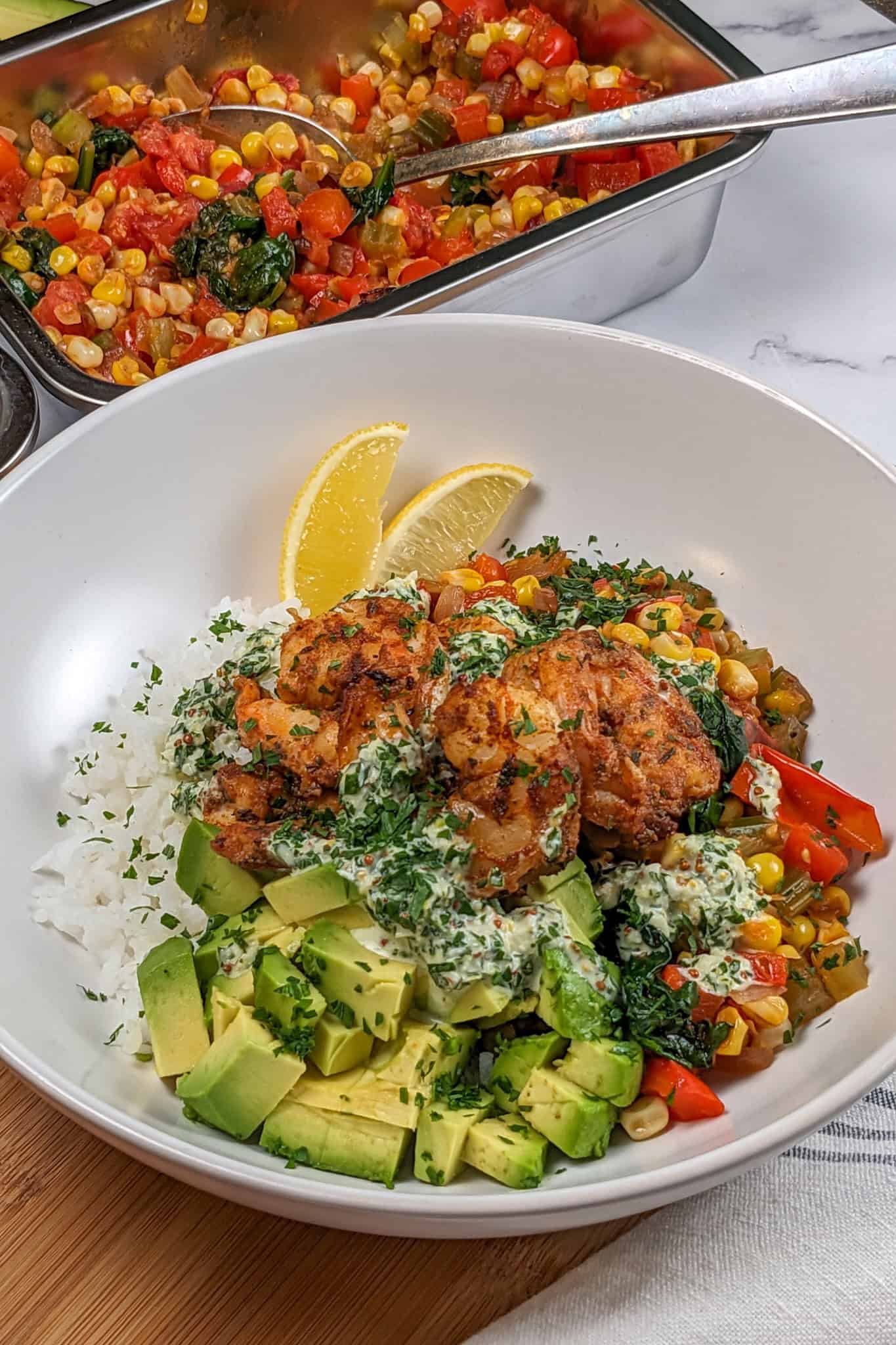
Frequently Asked Questions
Creole seasoning blends typically have a milder, more balanced flavor with a mix of herbs like thyme, oregano, and bay leaf, along with garlic, paprika, and sometimes cayenne pepper, while Cajun seasoning is generally spicier and more robust, focusing heavily on paprika, cayenne, garlic powder, and black pepper with fewer herbs.
Yes, you can use frozen shrimp. Just make sure to thaw them completely and pat them dry before seasoning to ensure they cook evenly and absorb the flavors.
Long-grain white rice or jasmine rice work well, as they have a light, fluffy texture that complements the bold flavors of the Cajun shrimp and remoulade.
The spice level can be adjusted! You can reduce the Cajun seasoning or omit the red pepper flakes if you prefer a milder version of the dish.
Rice Bowl Recipes
Looking for other spicy rice bowl recipes like this? Try these:
- Haitian Djon Djon Rice Recipe (Diri Djon Djon)
- Beituti Chicken Shawarma Rice Bowl | Quick and Easy
- How to Make Multigrain Rice | Purple Rice Recipe
- Grilled Shrimp Garlic Jalapeno Butter and Cilantro Lime Rice
Shrimp Recipes
Looking for other spicy shrimp recipes like this? Try these:
- Jerk Fajita Trio: 3 Must-Try Recipes for a Spicy Weeknight Cook-Up
- Air Fryer Jerk Shrimp Fajitas | Easy Caribbean in 20 Minutes
- Shrimp and Pork Belly Pad Thai - Spring Roll Style
- Spicy Creole Shrimp and White Cheddar Cheese Risotto
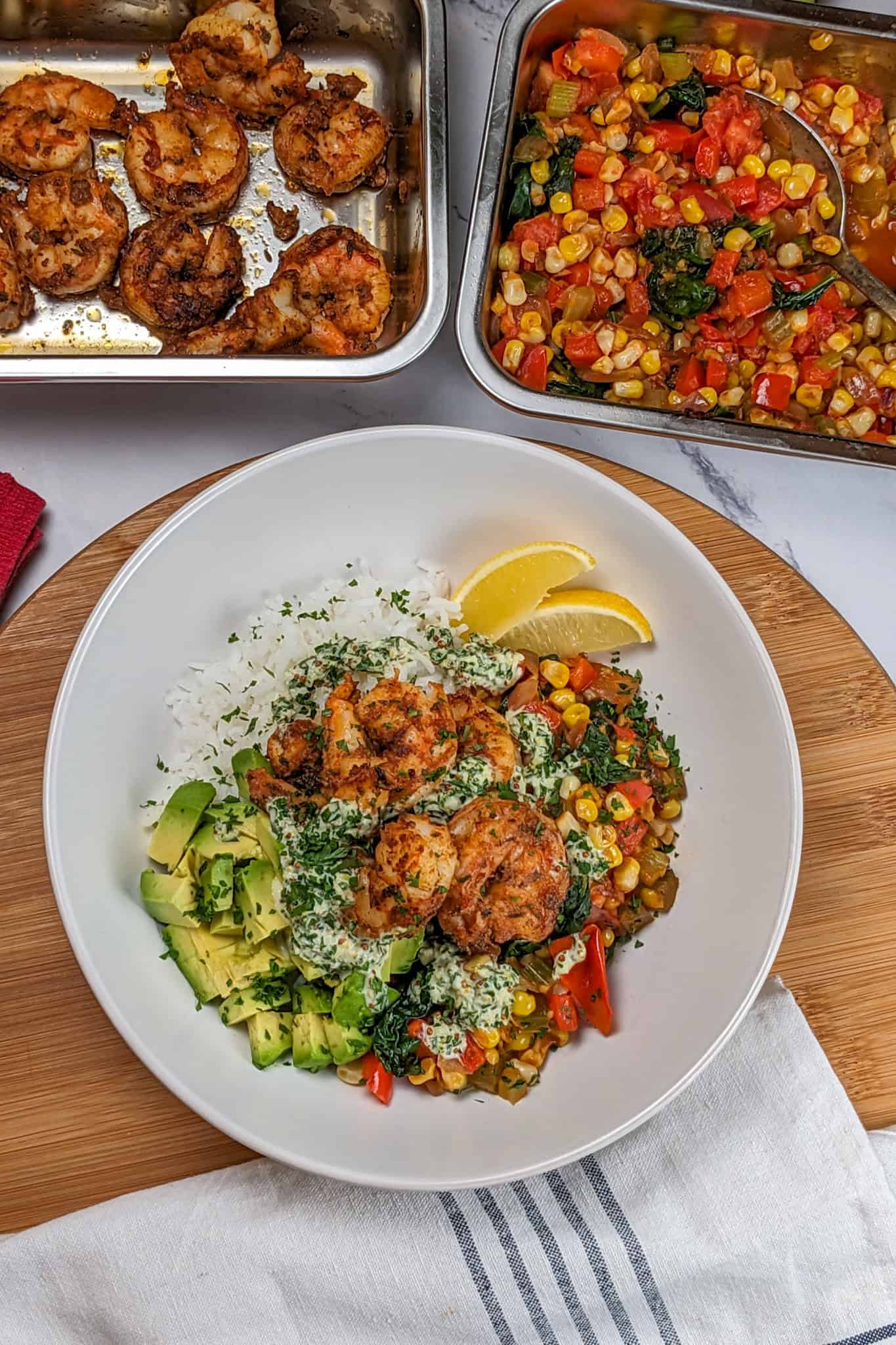
📖 Recipe
Spicy Cajun Shrimp Rice Bowl with Lemon Remoulade
Ingredients
Jasmine Rice
- 1 cup jasmine rice
- ½ cup water
- ½ teaspoon kosher salt
Holy Trinity Vegetables
- 2 corns on the cob
- ½ medium red onion
- 1 red bell pepper
- 1 rib of celery
- 6 Campari tomatoes
- 1 tablespoon avocado oil
- 2 cups baby spinach
- salt and pepper to taste
Lemon Dijon Mustard Remoulade
- 1 cup packed in flat-leaf parsley
- 5 garlic cloves
- ¼ cup mayonnaise
- 1 tablespoon whole-grain Dijon mustard
- 1 lemon juiced and zested
Cajun-Spiced Shrimp
- 1 pound of 16/20 shrimp peeled and deveined
- 1 tablespoon Cajun seasoning or Creole
- salt and pepper to taste
- 2 tablespoons avocado oil
Sides and Garnish
- 1 avocado
- Optional: Garnish with chopped parsley
Equipment
Instructions
- Save time in the kitchen: Read the instructions thoroughly, then gather and prep all your ingredients before cooking! Learn Prepping Tips.
- Prepare the Rice: To make the jasmine rice in a rice cooker, rinse the rice until the water runs clear, then add 1 part of rice to 1 ½ part of water and cook according to your rice cooker's instructions.
- To make it on the stovetop, rinse the rice until the water runs clear, then combine 1 part of rice with 1 ½ parts of water in a pot. Bring to a boil, reduce heat to a little under medium, cover, and simmer for 15 minutes before letting it rest off the heat for 10 minutes.
- Prepare the Vegetables: Keeping the vegetables separate, cut the corn kernels off the cob. Dice the onion, bell pepper, and celery. Then, cut the tomatoes into eighths.
- Cook the Vegetables: Heat a large skillet on medium-high heat with oil. Since there are a lot of vegetables, adding them all at the same time will lower the heat drastically, creating soggy vegetables. To prevent this, add and fry the onions for one minute, allow the pan's heat to return, then add the corn and cook them for one minute.
- Continue this process with the bell pepper and celery until all the vegetables have been added. Season them with salt and pepper and let the vegetables cook for 5 to 8 minutes while stirring occasionally until the onions have become golden brown. While the vegetables cook, make the sauce.
- Make the Sauce: Finely chop or blend flat-leaf parsley, garlic cloves, mayonnaise, Dijon mustard, lemon juice, and zest with salt and pepper in a food processor and set it in the fridge covered.
- Prepare the Shrimp: Peel, devein, and pat the shrimp dry with a paper towel. Then, combine it with smoked paprika, onion powder, garlic powder, cayenne pepper, dried basil, dried oregano, dried thyme, kosher salt, and ground black pepper.
- Cook the Shrimp: Remove the vegetables and set them aside next to the stove. Wipe and reheat the skillet over medium-high heat with oil. Once the oil is shimmering, carefully place the shrimp in the skillet, ensuring they are in a single layer and not overcrowded.
- Cook the shrimp for about 1 to 2 minutes until you see signs that they are beginning to curl. Then, flip them, starting from the center out, and cook for another 1 to 2 minutes until cooked through. Immediately remove them from the skillet.
- Finish the Vegetables: Return the pan to the heat, add the tomatoes, and let the juices lift the fond from the pan. Then add and wilt the spinach. Add the reserved vegetables back to the pan and toss them all together.
- Serve: Portion out the rice, shrimp, and sauteed vegetables and serve with diced avocado and the remoulade. Optionally, garnish with chopped parsley.
Video
Notes
- Cold Remoulade - You can omit chilling the sauce as a preference. However, to prevent food-borne illnesses, do not leave the sauce out at room temperature for more than two hours.
- Homemade Cajun Seasoning Blend for the Shrimps (4 Servings)
- 1 teaspoon smoked paprika
- ½ teaspoon onion powder
- ½ teaspoon garlic powder
- ¼ teaspoon cayenne pepper
- ¼ teaspoon dried basil
- ¼ teaspoon dried oregano
- ¼ teaspoon dried thyme
Nutrition
Subscribe to my YouTube Channel.
SUBSCRIBE: 👈To my YouTube Channel to Get Notifications of New Videos.
Have a Comment or Question?
If you have a question or comment about this Cajun Shrimp Rice Bowl recipe, please post it below. You will definitely get a quick response, and it will also help our other readers stay informed. Thanks!

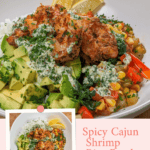
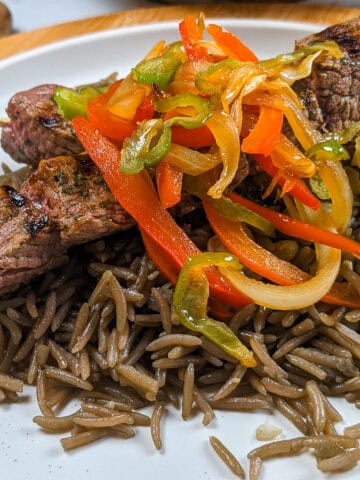
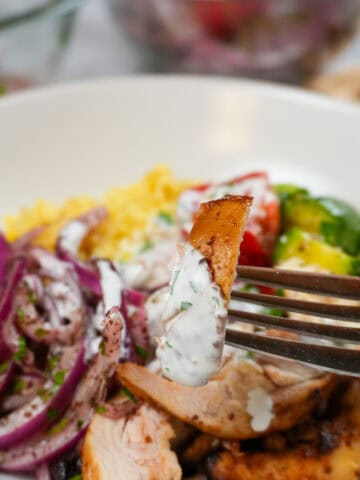
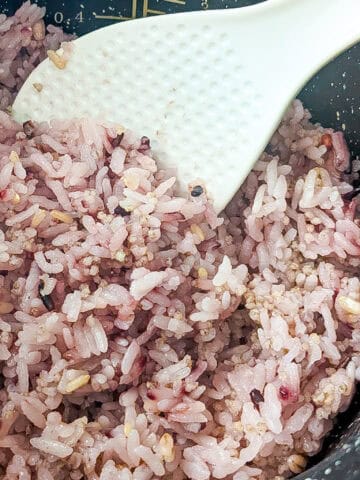
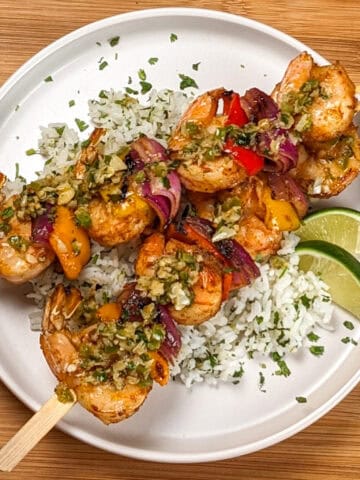
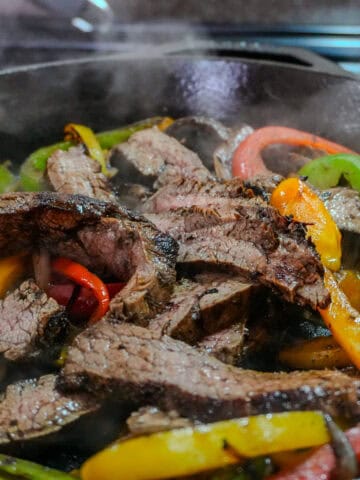
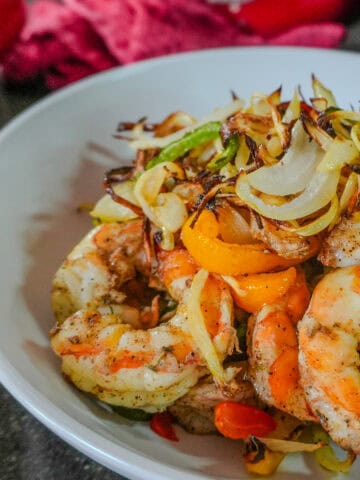
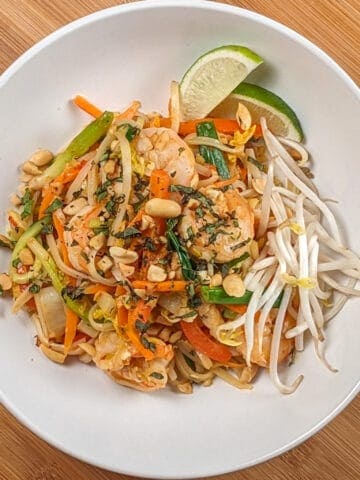
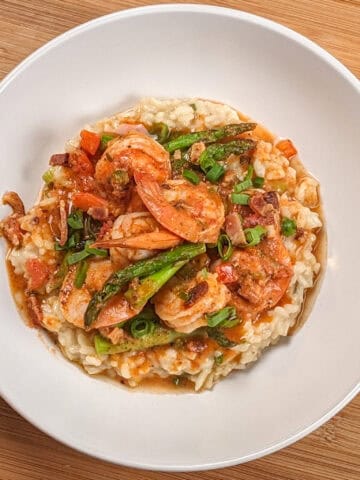
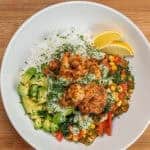
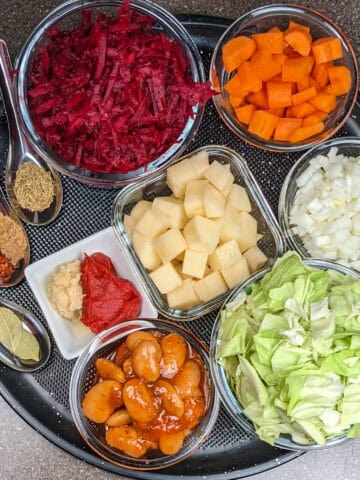
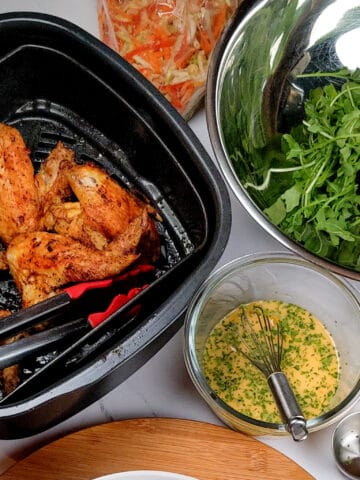
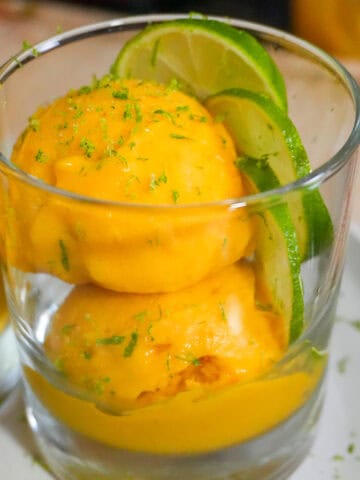
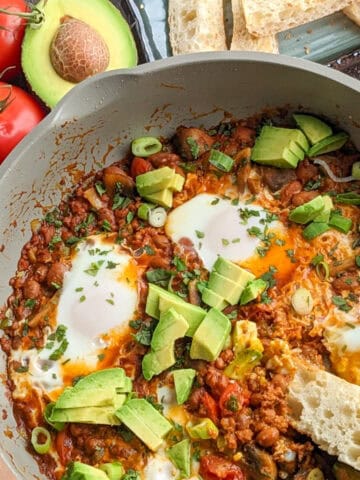
Margaret says
I want to make this, but can I make this less spicy?
Maika says
Hi Margaret! You can reduce the spiciness by adjusting the amount of cayenne pepper in the Cajun seasoning or by using a milder store-bought Cajun spice blend. You can also increase the amount of lemon remoulade to help balance the heat.